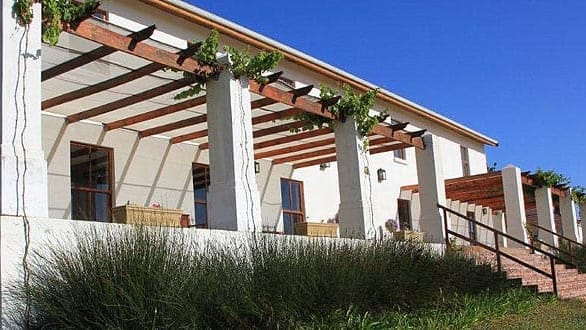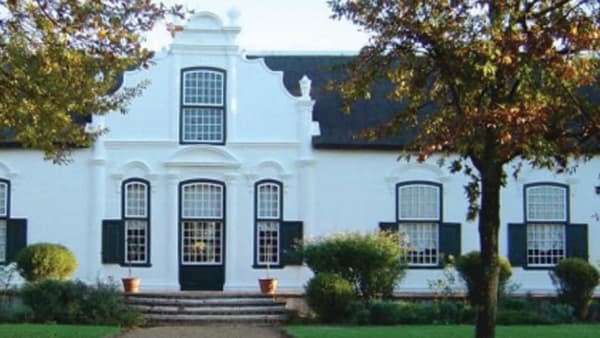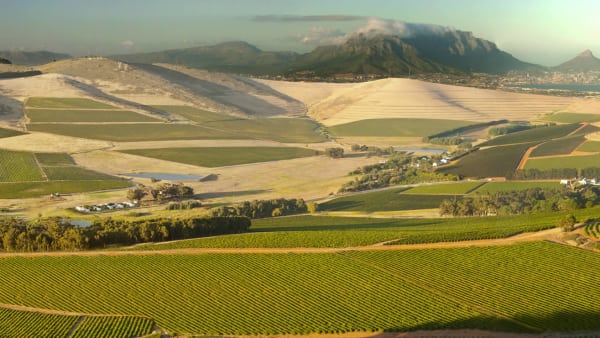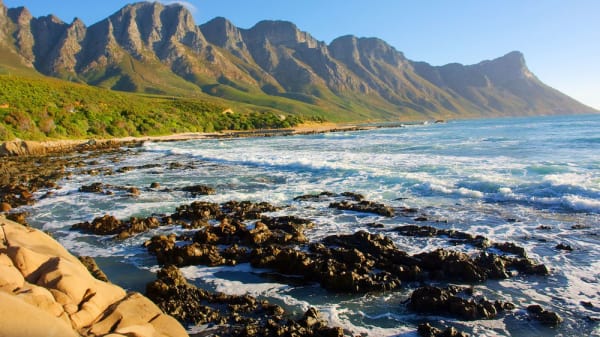The Western Cape is the most visited province in South Africa - largely due to the tourism hotspot of Cape Town. Do not be fooled, however, as wonderful as Cape Town is, you would be doing yourself a great disservice if you didn't get out and about all over this incredible province.
It has an enormous diversity of places and experiences to discover: a beautiful coastline with awesome beaches and fishing villages, stunning mountains, glorious vineyards, the semi-desert of the Karoo - the list goes on and on!
The Western Cape is bordered by the (cold) Atlantic Ocean to the East and the (warm) Indian Ocean to the South. It is bordered to the North by the Northern Province and to the East by the Eastern Province. It occupies around 10% of the South African landmass and contains around 12,5% of the population - a little more than six million people. It is roughly the size of England.
The Western Cape is the southernmost region of the African continent with Cape Agulhas being the southernmost point, only 3 800 km from the Antarctic coastline. This is also where the Atlantic and Indian Oceans meet.
No matter how long you plan to stay in the Western Cape you are likely to only scratch the surface of the province. The beautiful city of Cape Town will capture your heart and blow your mind with the incredible variety and range of things to do in and around it.
Table Mountain is impossible to miss sitting slap, bang in the middle of the city. It is one of the Seven Wonders of Nature and the only one in an urban environment. A trip to the top on the cableway is mandatory - you will have views over the Cape peninsula that you can only dream of if you don't do it for yourself!
Surrounding Cape Town is a blanket of magnificent wine farms in which one can get lost forever which is why the Western Cape is believed to have the world's longest wine route - 850 kilometres!!
Travel East and you get onto the magnificent Garden Route with beautiful beaches, mountains and forests; travel north and you will find yourself in small, quaint fishing villages surrounded by endless beaches, or in spring amongst endless fields of wild flowers; travel north east and you will go through imposing mountains and then suddenly pop out in the Karoo which feels like you have arrived on another planet.
Cape Town experiences the most beautiful summer weather. Almost all its rain falls in winter so the summer months almost always feature clear sunny skies. This is perfect for all outdoor pursuits, not least of which include lying on one of the many gorgeous beaches all along the coastline, hiking, climbing mountains and almost any watersport that you can imagine. This weather is also ideal for eating and drinking at the biggest variety of restaurants, pubs, wine estates and breweries.
In winter the Western Cape is a little less hospitable due to the fact that it is the rainy season and the weather is suitably unpredictable. That doesn't mean that it isn't worth going - there certainly are lovely days and the interior of the Karoo has some beautiful sunny winter weather.
If all else fails then you can always retreat to one of the aforementioned establishments and sit around a roaring fire with a glass of the Cape vineyards finest red wines and share travel stories. There are also many museums and places of historical significance in which to spend some time.
- The beautiful city of Cape Town.
- Table Mountain - one of the Seven Wonders of Nature.
- The beautiful and rugged coastline.
- The magnificent vineyards and world class Cape wines.
- The endless fields of wild flowers in spring.
- Small, quaint fishing villages dotted along the coast.
- A plethora of craft micro breweries.
- An enormous range of outdoor activities for everyone - from the gentle to the crazy!
- The quiet solitude of the Karoo where time appears to have just stopped.
- The beauty of the Garden Route with its wild coastline, rugged mountains and lovely forests.
Cape Town was where South Africa's European history began when Jan van Riebeek, of the Dutch East India Company, established a permanent settlement in 1652 to replenish the company's ships as they sailed from Europe to the Far East and back. This area is therefore steeped in history.
In 1654 the first Asians - from Batavia - arrived in the Cape. These people were from the areas where the Dutch were getting their spices and they were the forerunners of the sizeable Coloured community in this area as well as the spread of Islam.
The French Huguenots were the next large homogenous group of immigrants to arrive at the Cape - in 1688. They fled France due to anti-protestant persecution by the Roman Catholics and were responsible for setting up and creating the South African wine industry.
One hundred years after Van Riebeek's arrival the population of the Cape was recorded as 5 510 Europeans and 6 279 slaves.
The British took over the Western Cape in 1795 following a series of wars n Europe involving them, the French and the Dutch. This lead to a whole series of changes in the region, such as the emancipation of the slaves, and lead to a lot of conflict between the British rulers and the Dutch settlers.
Unable to adapt to these changes and the British authority they were required to live under, about 10 000 Dutch families set off north into the unknown interior of the country in 1836. They subsequently opened up the interior of what eventually became South Africa.
Robben Island - the prison of the iconic Nelson Mandela and other political prisoners from South Africa's apartheid past - is a short boat journey away from the Cape Town Waterfront.

The Western Cape is also climatologically diverse, with many distinct micro- and macroclimates created by the varied topography and the influence the surrounding ocean currents. These are the warm Agulhas Current which flows southwards along South Africa's east coast, and the cold Benguela Current which is an upwelling current from the depths of the South Atlantic Ocean along South Africa's west coast.
Thus climatic statistics can vary greatly over short distances. Most of the province is considered to have a Mediterranean climate with cool, wet winters and warm, dry summers. Both the Great Karoo and Little Karoo, in the interior, have an arid to semi-arid climate with cold, frosty winters and hot summers with occasional thunderstorms. The Garden Route and the Overberg on the south coast have a maritime climate with cool, moist winters and mild, moist summers. Mossel Bay in the Garden Route is considered to have the second mildest climate worldwide after Hawaii.
Thunderstorms are generally rare in the province (except in the Karoo) and extremes of heat and cold are common inland, but rare near the coast. Snow is a common winter occurrence on the Western Cape Mountains occasionally reaching down into the more inland valleys. Otherwise, frost is relatively rare in coastal areas and many of the heavily cultivated valleys.
Source: Wikipedia
















